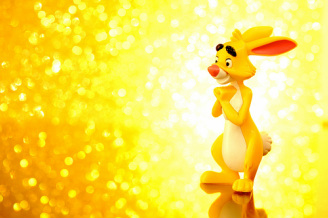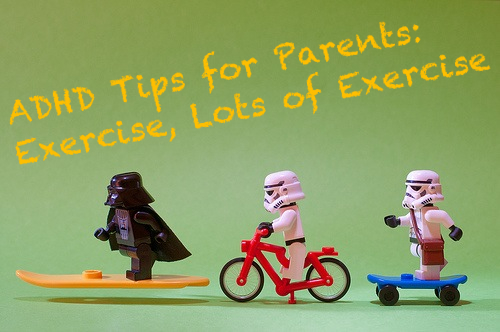 Photo Credit: amenclinicphotos ac via flickr Photo Credit: amenclinicphotos ac via flickr  As a parent with a child with ADHD, does it ever feel like it's you against six storm troopers? Those are tough odds. Here are five books to help you be a better parent to a child, who, while having great potential, also can't find his socks right now... that are on his feet. (Face palm.) DISCLAIMER: First, just so we're clear, you're already a great parent, just by reading books like these. It isn't necessarily the books, but that you are the type of parent who clicks on a post like this and reads books like these, that makes the difference. Second, nothing to disclose, no affiliation with any of the authors or Amazon. No affiliate links.  Photo Credit: pasakuru via flickr Photo Credit: pasakuru via flickr And this is a picture, for visual effect, of you against six storm troopers... yeah, not pretty. So, onto the amazing parent that you are, who reads all the books. (If you're missing the reference, go back and read the disclaimer.) CONTINUE READING
Guest Post by R. Andrew Bindewald III  Photo Credit: All Photos by JD Hancock via Flickr Photo Credit: All Photos by JD Hancock via Flickr  This post on ADHD subtypes and Winnie-The-Pooh comes from Andrew Bindewald, a Master's student from Regent University. He found the idea intriguing that different characters from The Hundred Acre Woods offered great metaphors for different aspects of ADHD. So, without further delay... The wonderful thing about Tiggers... is hyperactivity. Which is sometimes... not so wonderful... :-/ Hyperactivity
Over-Focused and Anxious
Overly Anxious and Shy  Photo Credit: JD Hancock via Flickr Photo Credit: JD Hancock via Flickr A child like Piglet may or may not have ADHD. Piglet does has trouble shifting attention, but also has excessive worry, is hypervigilant, and easily startled. These are signs of Social Phobia or Social Anxiety Disorder, which can co-occur with ADHD. Help Piglets by following their lead and letting them set the pace. Encourage new opportunities for social interaction and praise small successes.
InattentiveOr Does Your Child Look More like Eeyore?  Photo Credit: JD Hancock via Flickr Photo Credit: JD Hancock via Flickr Eeyore is a sad fellow who has little energy, chronic low-grade depression, and feelings of hopelessness. These can be signs of childhood depression, difficulties at school or trouble adjusting to changes in family life, such as moving, divorce, etc. Help Eeyores by asking them to talk about problems in bite-sized chunks. Let them act out the struggles in play, be involved in what is going on at school and with their friends. The Most Wonderful Thing About ADHD... There is strength in knowledge and awareness. By realizing there are many different kinds of ADHD, and by identifying and understanding different symptoms, you can help your child live a fuller, happier life! Check out other posts for more tips for hyperactive children with ADHD. As a parent of a child who has been diagnosed with ADHD and exhibits anxiety, hyperactivity or inattention, you are not alone! Reach out to other parents who know what you're going through. Seek the help of a supportive and understanding counselor who can help you and your child develop practical strategies that build on his strengths, instead of focusing on his deficits. I would love to hear your thoughts and comments. Please tell us about your experiences with ADHD, and do not hesitate to share a story of your own! (P.S. We showed you a picture of Roo and Kanga in the picture collage at the top... Roo doesn't have ADHD, :) he's just a fun kiddo.) by Nikki Schwartz
Photo Credit (Bottom Right, Clockwise): Kids Giving Your Problems? Hire an Elephant by peasap, Blowing Bubbles by Nicki Varkevisser, Tapping a Pencil by Rennett Stowe, Running by Ian Carroll. All photos used with permission via Flickr, with Creative Commons Licenses.
Disclaimer: The information provided on this website does NOT constitute medical advice, and should NOT serve as the basis for any medical decision by you. Please consult with a physician or other medical professional should you have questions regarding information contained in this section of our Website.
Important Note: Safety is key with this type of ADHD strategy. Please utilize these ideas wisely. These suggestions are not meant to substitute common sense or the advice of a health professional.
  This is my second post in the ADHD Tips for Parents series. I started off by posting an ADHD Tips Infographic that offered alternatives to ADHD habits that are unsafe, unhealthy or simply annoying to others. The ADHD brain tends to have an understimulated frontal lobe, where decision making, planning, and organizing happens. People with ADHD naturally choose activities and habits to help stimulate that area of the brain. Noisy fidgeting is very common, things like tapping feet, clicking pens, cracking knuckles, and tends to irritate others. CONTINUE READING (Photo from Top Left: Pencil Fidgets by Abilitations; The Ultimate Fidget by Sensory University; Therapy Tangle by Tangle Creations; Balance Cushion by Isokinetics) |
Nikki Schwartz,
|














 RSS Feed
RSS Feed
